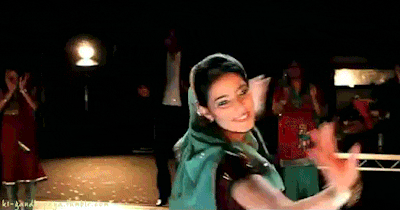Are you guys excited to get up on your feet and dance? Ready to feel high-intensive energy in your body and dance it out? Then, welcome back to my blog about the Punjabi dance form, bhangra.
Today, we are going to start with a little bit of history, how did bhangra originate? As I have said, bhangra grew in the area of Punjab in India and Pakistan. It is a folk-dance that was very traditional and rooted in several beliefs and ideals. While it is seen as a traditional dance form, it has changed and incorporated several new techniques, celebrations, and has become a very inclusive and diverse dance form. In much of the India and Pakistan region, there is a festival that celebrates the harvest in spring. This festival is called Vaisakhi, and it commemorates many events such as the Punjabi New Year, the founding of Sikhism, and the start of the harvest. As a result of the focus on the harvest and Punjab being a hugely agricultural area, the spread through the villages since the beginning. It was a very popular dance among Punjabi farmers, and it spread across the fields of Punjab. Years ago, around the 1800s, many families and townsfolk would gather together in the fields and perform bhangra. Some got into big groups and choreographed it while others would just freestyle to the beat of the drums, called the dhol. The traditional and more popular manner was to meet in groups and dance in a circular formation.

Transitioning into the early 1900s, it became more popular for groups and teams to form. They would be asked to perform at special occasions, where festivals and events were held. At first, male teams would popularly form and be asked by kings, politicians, and other famous people to dance at their receptions. Soon, females would join together and create their own official teams as well. They grew in popularity too, and they brought a different style of bhangra to the stage, giddha. Giddha had already existed but was often practiced in local settings. The style was performed by ladies only. It presented the same high level of energy as bhangra, but it also incorporated elements of elegance and flexibility.
The dance would continue to develop and expand across the country and the world. Increased acclaim and fame introduced competitions to India and Pakistan. In 1950, colleges would create dance teams, and they would compete with one another seeing who could execute the coordination, elegance, and intensity the best on the stage. Teams would bring their creativity to the stage whether with props or choreography. They increased the scope of bhangra, but it didn’t take away from the traditions and originality that defined it in the first place.
Regardless of when people danced or how they danced, everyone enjoyed it! As they continued their work in the fields, they would dance along the way, making their job much more enjoyable. As they met at social gatherings, they would dance the night away. Hopefully, now you have a strong urge to get up and dance! Tune-in next time to hear about the styles of dance that make up bhangra now.

This is so cool! Here’s what I liked: you exploration of the history in a more modern sense, your explanation of terms that would not be understood by someone who isn’t a part of this community, and your use of GIFs as well as pictures. I would love to hear more about how this dance is related to sikhism and how it is part of the religious tradition.
I thought that reading about the history of this style of dance was really interesting and I love the pictures so definitely keep those coming! I thought that it was interesting that the men and women do not dance together. Is that still the case? I cannot wait to hear more about this form of dance as it seems very lively and full of meaning.